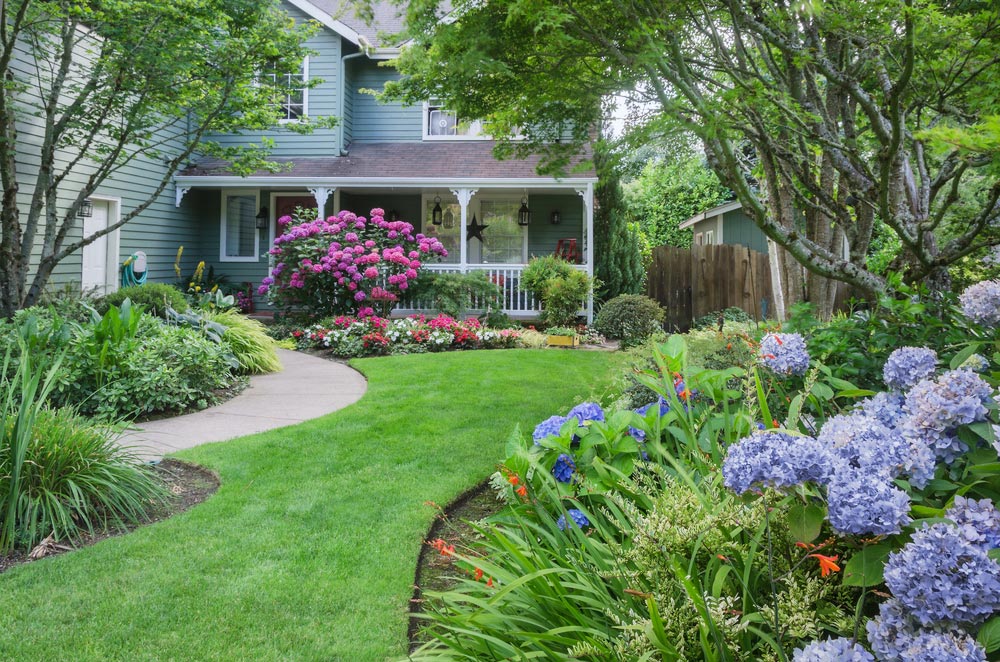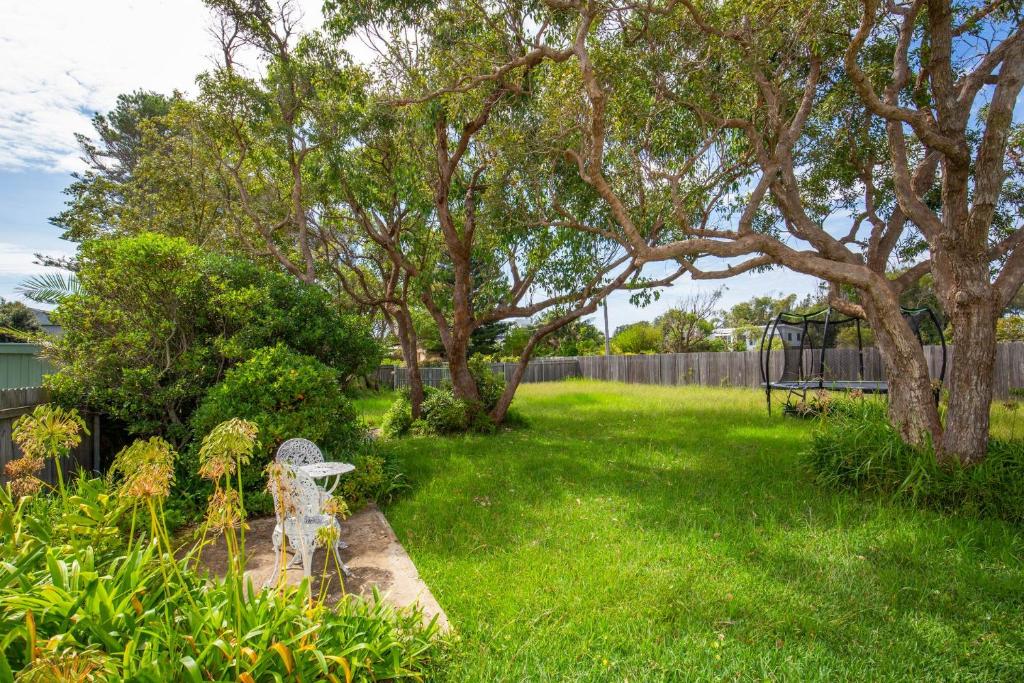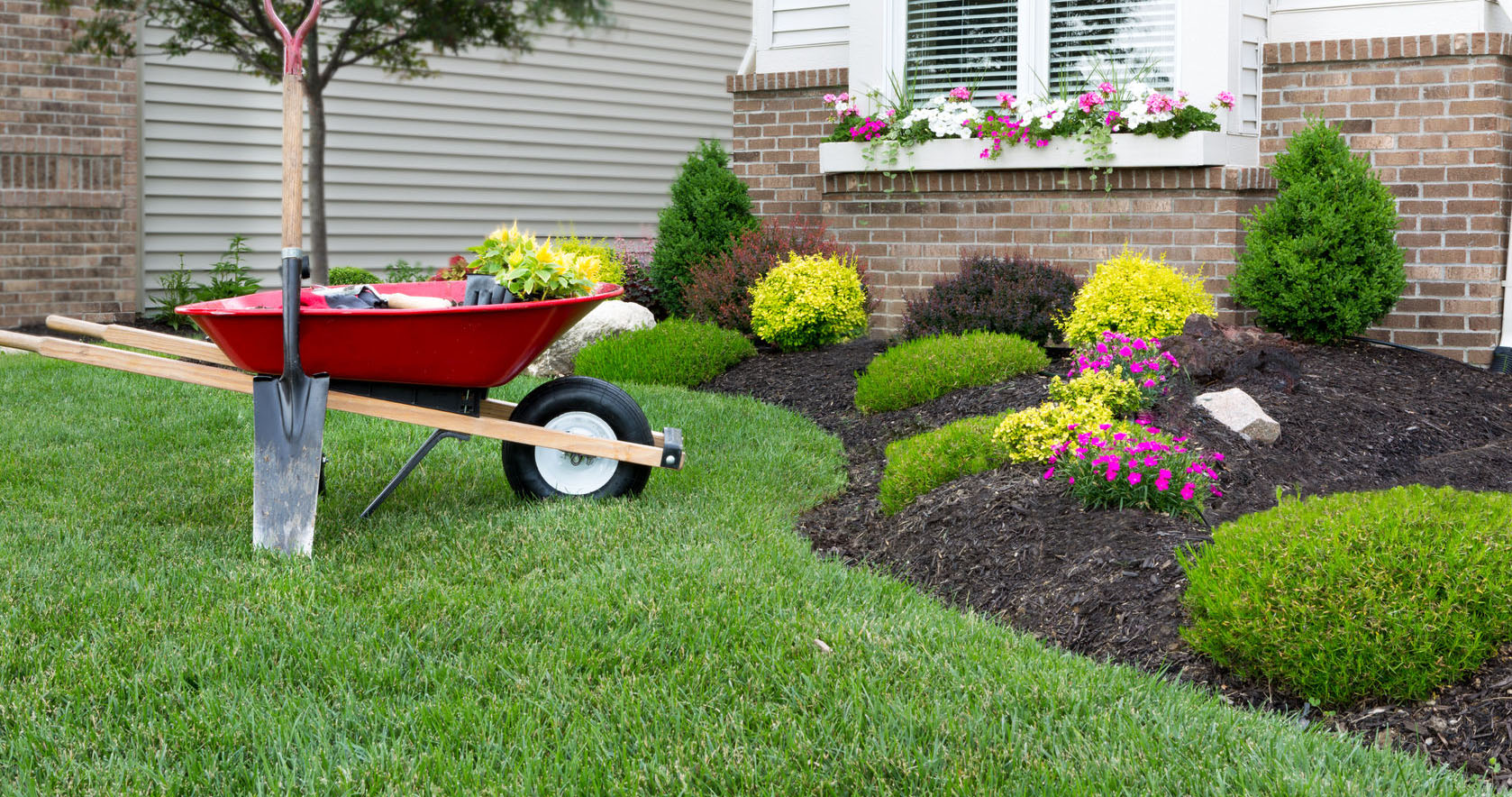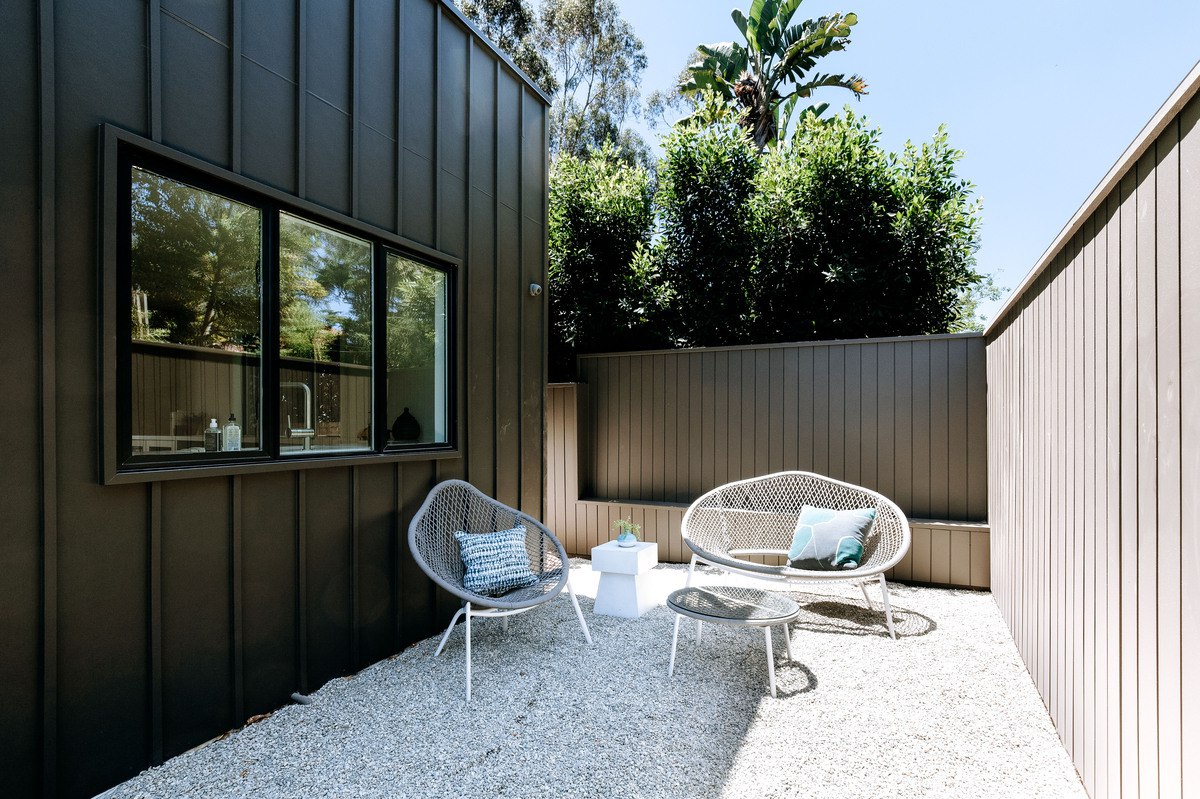Home>Garden Design>Planning Your Garden>What To Charge For Landscaping


Planning Your Garden
What To Charge For Landscaping
Modified: January 22, 2024
Learn how to plan your garden and determine what to charge for landscaping services. Get expert advice on pricing and creating a beautiful outdoor space.
(Many of the links in this article redirect to a specific reviewed product. Your purchase of these products through affiliate links helps to generate commission for Chicagolandgardening.com, at no extra cost. Learn more)
Table of Contents
- Introduction
- Factors to Consider when Pricing Landscaping Services
- Setting an Hourly Rate for Labor
- Estimating Material Costs
- Additional Costs to Include
- Calculating Overhead Expenses
- Determining a Profit Margin
- Pricing Strategies for Different Landscaping Services
- Pricing Examples and Case Studies
- Conclusion
Introduction
Welcome to the wonderful world of landscaping! Planning your garden can be an exciting and fulfilling project that allows you to create a beautiful and functional outdoor space. Whether you’re a seasoned gardener or just starting out, it’s crucial to have a solid plan in place before getting your hands dirty.
Proper planning is essential to ensure that your garden thrives and meets your expectations. From selecting the right plants to understanding the layout and design principles, there are numerous factors to consider. In this article, we will guide you through the process of planning your garden with expert tips and insights.
First and foremost, it’s important to assess your needs and goals for the garden. Are you looking to create a tranquil retreat, a vibrant flower garden, or a functional outdoor living space? Determining the purpose of your garden will help you make decisions regarding the layout, plant selection, and overall design.
Next, take into account the climate and environmental conditions in your area. Different plants thrive in different climates, so it’s crucial to select varieties that are suitable for your region. Consider factors such as sunlight exposure, average temperature, and water availability. This will help you choose plants that can withstand the local conditions and ensure their long-term survival.
Another important aspect to consider is your available space. Take measurements of the area and create a rough sketch or layout of your garden. This will help you visualize how different features and elements will fit together and allow you to plan accordingly. It’s also important to consider any existing structures, such as fences or trees, that may impact the layout of your garden.
Now that you have a clear vision of your garden’s purpose, climate considerations, and available space, it’s time to delve into the design process. Start by researching different styles and themes that appeal to you. Do you prefer a formal, structured garden, or a more natural and organic look? Look for inspiration in books, magazines, websites, or even visit local gardens for ideas.
Consider the various elements that make up a garden, such as plants, hardscaping features (like paths, patios, and walls), and focal points (such as sculptures or water features). Think about how these elements can work together harmoniously to create an aesthetically pleasing and functional space.
Remember that a well-planned garden evolves over time. It’s important to be patient and realistic about your expectations. Gardens take time to mature and develop, so embrace the process and enjoy the journey as your garden grows and flourishes.
In the following sections, we will delve deeper into the different aspects of planning your garden, including plant selection, layout, design principles, and maintenance. By the end of this article, you’ll have the knowledge and confidence to create the garden of your dreams.
Factors to Consider when Pricing Landscaping Services
Pricing landscaping services can be a complex task that requires careful consideration of several factors. As a landscaping professional, it’s important to determine the right pricing strategy that not only covers your costs but also maximizes your profitability. Here are some key factors to consider when pricing your landscaping services:
- Scope of the Project: The size and complexity of the landscaping project play a significant role in determining the price. Larger projects that require more materials, labor, and time will naturally have higher costs compared to smaller projects.
- Time and Labor: Evaluate the amount of time and labor required to complete the project. Consider factors such as site preparation, excavation, planting, hardscaping, and maintenance. It’s essential to ensure that your pricing covers both skilled and unskilled labor costs.
- Materials: Take into account the cost of materials needed for the project, such as plants, soil, mulch, fertilizers, hardscape elements, and irrigation systems. Research suppliers and compare prices to ensure you have an accurate estimate of material costs.
- Equipment: Consider the equipment and tools needed for the job, such as lawnmowers, trimmers, excavators, and trucks. Factor in the cost of purchasing, maintaining, and fueling these equipment when determining your pricing.
- Profit Margin: It’s important to set a reasonable profit margin that allows you to cover your overhead costs, business expenses, and generate a profit. Consider your industry standards and market competition when determining your profit margin.
- Market Demand: Evaluate the demand for landscaping services in your area. If there is high demand and limited competition, you may be able to justify higher prices. However, if the market is saturated, you may need to adjust your pricing accordingly to remain competitive.
- Experience and Expertise: Take into account your level of experience and expertise in the landscaping industry. If you have a specialized skill set or offer unique services, you may be able to charge higher prices compared to others in the market.
- Customer Budget: Consider the budget and spending capacity of your target customers. It’s crucial to strike a balance between charging a fair price for your services and ensuring that your customers perceive value in what you offer.
Remember, pricing landscaping services is not an exact science, and there is no one-size-fits-all approach. Each project is unique, and it requires careful analysis of the above factors to arrive at a price that is fair to both you and your clients. By considering these factors, you can ensure that your pricing accurately reflects the value of your services while remaining competitive in the market.
Setting an Hourly Rate for Labor
One crucial aspect of pricing landscaping services is determining the appropriate hourly rate for labor. This rate will vary depending on factors such as your location, level of expertise, and the type of services you offer. Setting the right hourly rate is essential to ensure that your pricing covers your labor costs while remaining competitive in the market. Here are some considerations when setting your hourly rate:
- Calculate Your Labor Costs: Start by calculating your labor costs, which include wages, benefits, insurance, and taxes. Consider the pay rates for your employees or subcontractors and factor in any additional costs associated with their labor.
- Consider Your Overhead Expenses: Take into account your overhead expenses when determining your hourly rate. This includes costs such as office space rent, utilities, equipment maintenance, and marketing expenses. Divide these expenses by the number of hours you expect to work in a year to arrive at an overhead cost per hour.
- Factor in Profit Margin: It’s important to include a profit margin in your hourly rate to ensure that your landscaping business remains sustainable. Consider your desired profit margin and add it to your labor and overhead costs to determine an appropriate rate that covers all expenses.
- Research Industry Standards: Research industry standards and average hourly rates in your area to understand the market pricing. This will give you a benchmark to compare with and help you ensure that your rates are in line with industry norms.
- Evaluate Your Experience and Expertise: Take into account your level of experience and expertise when determining your hourly rate. If you have specialized skills or extensive experience in landscaping, you may be able to charge a higher rate compared to someone who is just starting out.
- Consider the Type of Services: Different landscaping services may require different rates. For example, basic lawn maintenance tasks may have a lower hourly rate compared to complex hardscaping or landscape design projects. Evaluate the complexity and skill level required for each service to determine the appropriate rate.
- Competitive Analysis: Conduct a competitive analysis to understand the pricing strategies of other landscaping businesses in your area. Consider factors such as their quality of service, reputation, and the value they provide to determine how your rates compare.
Setting an hourly rate for labor is a balancing act. You want to ensure that your rate covers your labor costs, overhead expenses, and generates a profit, while also remaining competitive in the market. Regularly review and adjust your hourly rate as needed to account for changes in expenses, market conditions, and your level of expertise.
Estimating Material Costs
Accurately estimating material costs is crucial when pricing landscaping services. The cost of materials will vary depending on factors such as the type of project, the size of the area, and the specific materials required. Estimating material costs correctly ensures that your pricing covers these expenses, allowing you to provide an accurate quote to your clients. Here are some steps to help you estimate material costs effectively:
- Determine the Scope of the Project: Assess the scope of the landscaping project to determine the materials needed. Consider elements such as plants, soil, mulch, fertilizers, hardscape materials, irrigation systems, and any other specific materials required for the project.
- Research Material Prices: Research suppliers in your area and compare prices for different materials. It’s essential to find reliable suppliers who offer quality materials at competitive prices. Keep in mind that prices may fluctuate, so make sure to factor in any potential price increases or seasonal variations.
- Take Measurements: Measure the area of the landscaping project to determine the quantity of materials needed. For example, measure the square footage of the lawn for seed or sod, or calculate the linear footage of pathways or walls for materials like pavers or bricks.
- Create a Material List: Create a comprehensive list of the materials required for the project. Include quantities, specific types or variations, and any additional components or accessories needed. This will help you stay organized and ensure that you don’t overlook any essential materials.
- Factor in Waste and Overages: Account for any waste or overages that may occur during the project. It’s common for a small percentage of materials to be wasted or damaged during installation, so adding a buffer to your material estimates can help prevent unexpected expenses.
- Consider Delivery and Handling Costs: Don’t forget to include any delivery or handling costs associated with the materials. If you need to transport materials to the job site or require special equipment for handling, factor in these expenses when estimating material costs.
- Keep Track of Price Changes: Stay informed about price changes in the market. Material costs may fluctuate due to factors such as supply and demand, inflation, or seasonal variations. Regularly update your material cost estimates to ensure that your pricing remains accurate.
By following these steps and considering all relevant factors, you can estimate material costs more effectively. Accurate estimation will not only allow you to provide clients with reliable quotes but also ensure that your pricing covers your material expenses, allowing you to maintain profitability. Regularly review and adjust your material cost estimates as needed to reflect any changes in material prices or project requirements.
Additional Costs to Include
When pricing landscaping services, it’s essential to consider not only the direct costs of labor and materials but also the additional costs that may be involved in the project. These additional costs can impact your profitability and should be included in your pricing to ensure that you are adequately compensated. Here are some common additional costs to consider:
- Permits and Licenses: Depending on the scope of the project, you may need to obtain permits or licenses from local authorities. These may incur fees that should be factored into your pricing.
- Design and Planning: If you offer design and planning services, it’s important to account for the time and expertise required for these tasks. Design consultation, site assessments, and creating detailed plans should be considered when determining your pricing.
- Site Preparation and Cleanup: Clearing the site, removing debris, and preparing the area for landscaping can involve additional costs. Consider the labor, equipment, and disposal fees that may be required for site preparation and cleanup.
- Specialized Equipment Rentals: For certain projects, you may need to rent specialized equipment or tools that you don’t typically use. These rental costs should be included in your pricing to cover the expenses incurred.
- Subcontractor Fees: If you need to hire subcontractors, such as electricians or irrigation specialists, their fees should be considered as an additional cost. Factor in the cost of their services when calculating your overall pricing.
- Travel Expenses: If your project requires traveling to the client’s location, consider the cost of transportation, fuel, and any accommodations that may be necessary. These travel expenses should be accounted for in your pricing.
- Insurance and Bonding: Proper insurance coverage and bonding are essential for any landscaping business. Include the cost of insurance premiums and bonding fees in your pricing to ensure that you are adequately protected.
- Maintenance and Warranty: If you offer maintenance services or provide a warranty for your work, include the cost of these services when determining your pricing. Maintenance tasks, such as regular lawn care or plant upkeep, should be accounted for in your pricing structure.
By factoring in these additional costs, you can ensure that your pricing accurately reflects all the expenses involved in the project. Taking into account these costs will not only help you maintain profitability but also provide transparency to your clients about the value they are receiving. Regularly evaluate your pricing structure and adjust as necessary based on changes in these additional costs.
Calculating Overhead Expenses
Calculating overhead expenses is a critical step in determining the pricing for your landscaping services. Overhead expenses are the ongoing costs that are necessary for your business to operate but are not directly tied to a specific project. Including overhead expenses in your pricing ensures that you cover all the costs associated with running your landscaping business. Here’s how to calculate your overhead expenses:
- Identify Your Overhead Costs: Start by identifying all the expenses that are not directly attributable to a specific project. These can include rent, utilities, insurance, office supplies, marketing expenses, licensing fees, accounting services, and any other administrative or operational costs.
- Calculate Annual Overhead Costs: Determine the total annual cost for each overhead expense by adding up the expenses incurred over a year. This includes monthly, quarterly, and yearly costs. Be sure to consider any seasonal fluctuations or periodic expenses.
- Divide by the Number of Working Days: Determine the number of working days in a year, excluding weekends, holidays, and any planned time off. Divide your total annual overhead costs by the number of working days to calculate the daily overhead cost.
- Factor in the Hours Worked: Estimate the total number of billable hours you or your team will work in a day. This should account for breaks, non-billable tasks, and any other time that cannot be invoiced to clients. Divide the daily overhead cost by the billable hours to determine the overhead cost per hour.
- Consider Your Profit Margin: Add a percentage for profit margin to cover your desired level of profitability. This additional amount should be added to the calculated overhead cost per hour to ensure that you generate a profit from your landscaping services.
By accurately calculating your overhead expenses, you can incorporate these costs into your pricing to ensure that each project covers the necessary expenses to keep your business running. Remember to review and adjust your overhead cost calculations periodically to account for any changes in expenses or business operations. This will help you maintain profitability and provide your clients with the value they expect from your landscaping services.
Determining a Profit Margin
Determining a profit margin is a crucial step in pricing your landscaping services. Your profit margin represents the amount of profit you aim to make on each project, after covering all your costs and expenses. It reflects the value you provide as a skilled professional in the landscaping industry. Here are some factors to consider when determining your profit margin:
- Evaluate Your Market: Research and analyze the market to understand the pricing trends and profit margins of other landscaping businesses in your area. This will give you an idea of what is considered reasonable and competitive in the industry.
- Consider Your Costs: Evaluate your costs, including labor, materials, overhead expenses, and any other direct or indirect expenses associated with each project. Make sure you have a clear understanding of all the costs involved in providing your landscaping services.
- Assess Your Value: Consider the value you bring to your clients through your expertise, experience, and the quality of your work. Your profit margin should reflect the value your clients receive from hiring you for their landscaping needs.
- Factor in Risk: Assess the level of risk involved in your projects. Consider factors such as the complexity of the job, potential delays, adverse weather conditions, and any other risks that may impact your ability to deliver the project on time and within budget.
- Set Realistic Goals: Determine your desired level of profitability. Consider your business goals, growth plans, and the level of return on investment you want to achieve. Set a profit margin that aligns with your long-term business objectives.
- Account for Market Demand: Consider the demand for your services in the market. If there is high demand and limited competition, you may be able to set a higher profit margin. However, if the market is highly competitive, you may need to adjust your profit margin accordingly to remain competitive.
- Balance Price and Value: Find a balance between setting a profit margin that adequately compensates you for your services and providing a competitive price that offers value to your clients. Strive to deliver a quality product while maintaining profitability.
By taking these factors into consideration, you can determine a profit margin that allows you to cover your costs, generate a profit, and remain competitive in the market. Remember that your profit margin should be flexible and subject to regular review. As your business grows and market conditions change, assess and adjust your profit margin accordingly to ensure continued success.
Pricing Strategies for Different Landscaping Services
When it comes to pricing landscaping services, different types of services may require different strategies to ensure you are providing competitive pricing while maintaining profitability. Here are some pricing strategies to consider for different landscaping services:
- Lawn Maintenance: For routine lawn maintenance tasks such as mowing, edging, and trimming, a common strategy is to charge an hourly or flat rate based on the size of the lawn. Consider factors such as the complexity of the terrain, the condition of the lawn, and the frequency of service when determining your pricing.
- Landscape Design and Installation: For landscape design and installation projects, it’s common to provide pricing based on the scope of the project. Consider factors such as the size of the area, the complexity of the design, the type and quantity of plants and materials, and the labor involved. Providing a detailed proposal with a breakdown of costs can help set clear expectations for your clients.
- Hardscaping: Pricing hardscaping projects, such as the installation of patios, walkways, or retaining walls, can be based on the square footage or linear footage of the project. Consider the materials used, the difficulty of installation, and the labor involved when determining your pricing. Additionally, factor in any specialized equipment or subcontractor fees if applicable.
- Irrigation Systems: With irrigation system installations and repairs, pricing strategies can include a combination of flat rates and hourly rates. Consider factors such as the size of the area to be irrigated, the complexity of the system, the number of zones or sprinkler heads, and any additional equipment or materials needed.
- Tree and Shrub Care: Pricing for tree and shrub care services, such as pruning, trimming, or tree removal, can be based on the size and health of the plants, as well as the complexity of the task. Larger trees or more extensive work will generally require higher pricing. It’s important to account for any equipment, permits, or disposal fees associated with these services.
- Seasonal Services: For seasonal services like spring or fall clean-ups, snow removal, or holiday lighting installations, pricing strategies can include flat rates or packages based on the specific services provided. Consider the size of the area, the complexity of the work, and the time and labor involved.
It’s important to remember that these pricing strategies are just a starting point. Each project may have unique considerations that require adjustments to the pricing strategy. Factors like local market conditions, competition, and customer demand should also be taken into account when determining your pricing for different landscaping services. Regularly evaluate and adjust your pricing strategies to remain competitive and ensure your profitability in the industry.
Pricing Examples and Case Studies
Examining pricing examples and case studies can provide valuable insights into how landscaping services are priced in real-life scenarios. While pricing can vary based on factors such as location, project complexity, and market conditions, these examples can help you understand the range of pricing options and factors that influence them.
Example 1: Lawn Maintenance
In this case, a landscaping company charges an hourly rate for lawn maintenance services. The hourly rate is $40, and the average size of the lawns they service is 1,000 square feet. With an average mowing time of 30 minutes per 1,000 square feet, the company charges $20 per visit for mowing, which includes edging and trimming. For larger lawns or lawns with more complex terrain, the rate increases proportionally to ensure time and effort are adequately compensated.
Example 2: Landscape Design and Installation
A landscape design and installation project involves transforming a client’s backyard into a functional and aesthetically pleasing outdoor space. The pricing for this project is determined based on the estimated hours of design work, the cost of materials (plants, hardscaping elements, irrigation system), and the labor required for installation. The overall project cost is estimated at $15,000, which includes the design fee, material costs, and labor expenses. The company breaks down the pricing in the proposal to provide transparency to the client.
Case Study: Hardscaping Project
A landscaping company is hired to install a patio and walkway for a residential customer. The project involves using interlocking pavers and requires excavation, preparing the base, laying the pavers, and finishing with sand and edge restraints. The company estimates that the project will take a crew of three workers three days to complete. They calculate the costs of materials, including the pavers, base materials, sand, and edge restraints. Add to that the labor costs and any equipment rentals needed. Based on these calculations, the total project cost is determined to be $8,000, which includes a 20% profit margin.
These pricing examples and case studies illustrate the different approaches and considerations involved in pricing various landscaping services. It’s important to note that these are just examples and the actual pricing for your landscaping services may differ based on your location, overhead expenses, competition, and other factors. Conducting thorough cost analysis, understanding the market, and maintaining a balance between value and profitability are key to determining fair and competitive pricing for your landscaping services.
Conclusion
Determining the right pricing for your landscaping services is a crucial aspect of running a successful landscaping business. By considering factors such as labor costs, material expenses, overhead expenses, profit margins, and market conditions, you can ensure that your pricing is fair, competitive, and sustainable.
Remember that each landscaping project is unique, and it’s important to evaluate the specific requirements and complexities of each job when determining your pricing. Whether you’re offering lawn maintenance, landscape design and installation, hardscaping, or other specialized services, tailor your pricing strategy to match the specific needs of the project.
Regularly review and adjust your pricing as necessary to account for changes in market conditions, expenses, and your level of expertise. Keep an eye on industry standards and competition to ensure that your pricing remains competitive and attractive to potential clients.
Transparency and communication are key when it comes to pricing your landscaping services. Provide clear and detailed proposals that outline the scope of work, the costs involved, and any additional fees or considerations. This helps establish trust with your clients and ensures that both parties have a clear understanding of the pricing and services being provided.
Lastly, don’t forget to continually evaluate the profitability of your landscaping services. Regularly assess your costs, expenses, and profit margins to ensure that your business remains sustainable and profitable in the long run.
By taking a thorough and strategic approach to pricing your landscaping services, you can strike the right balance between providing value to your clients and achieving your business goals. With diligent planning and consideration, you can set prices that not only cover your costs and generate a profit but also establish your reputation as a reliable and skilled landscaping professional.










